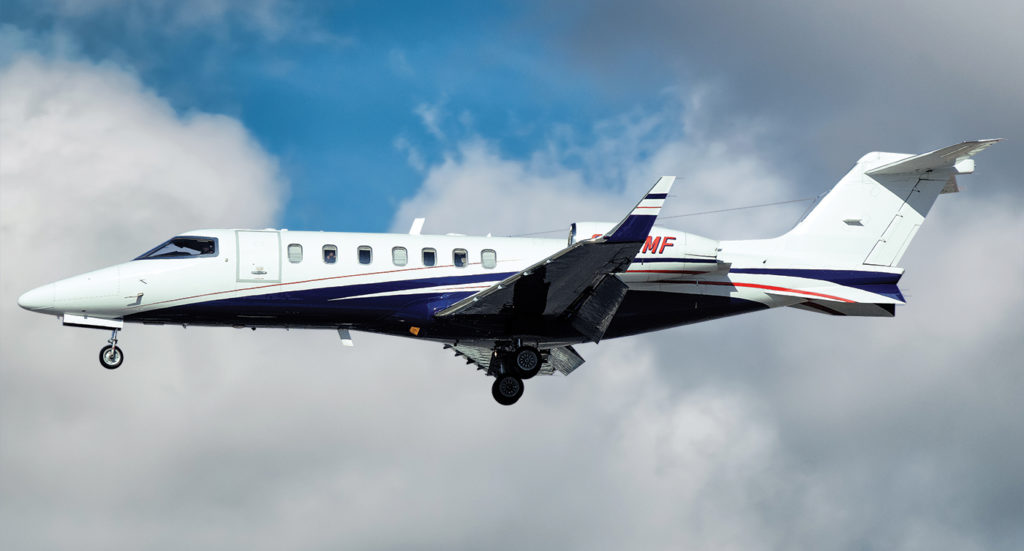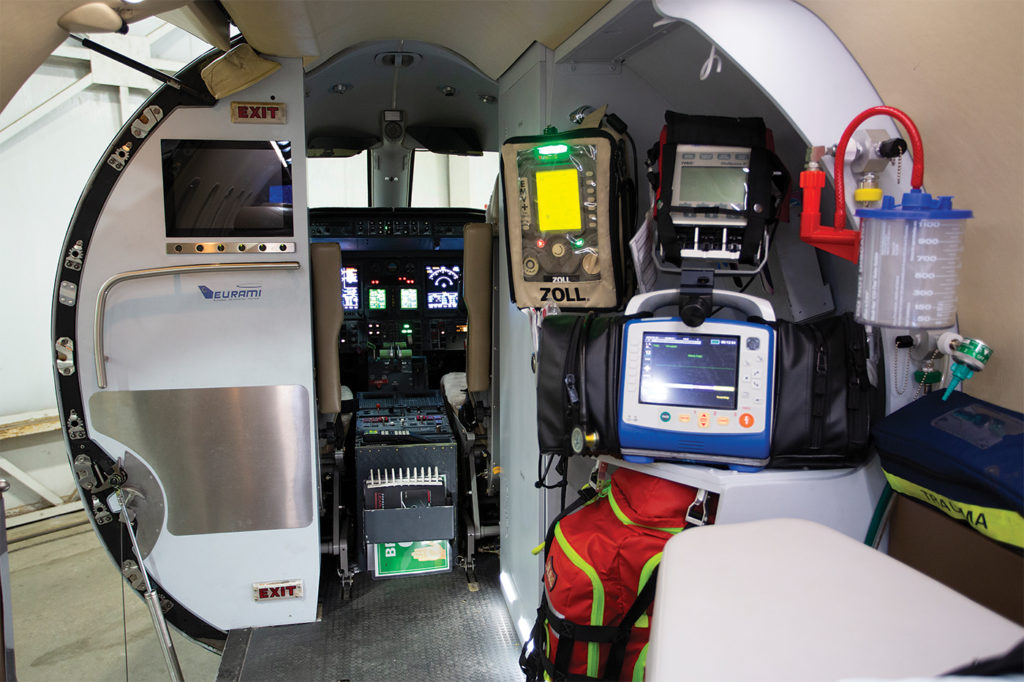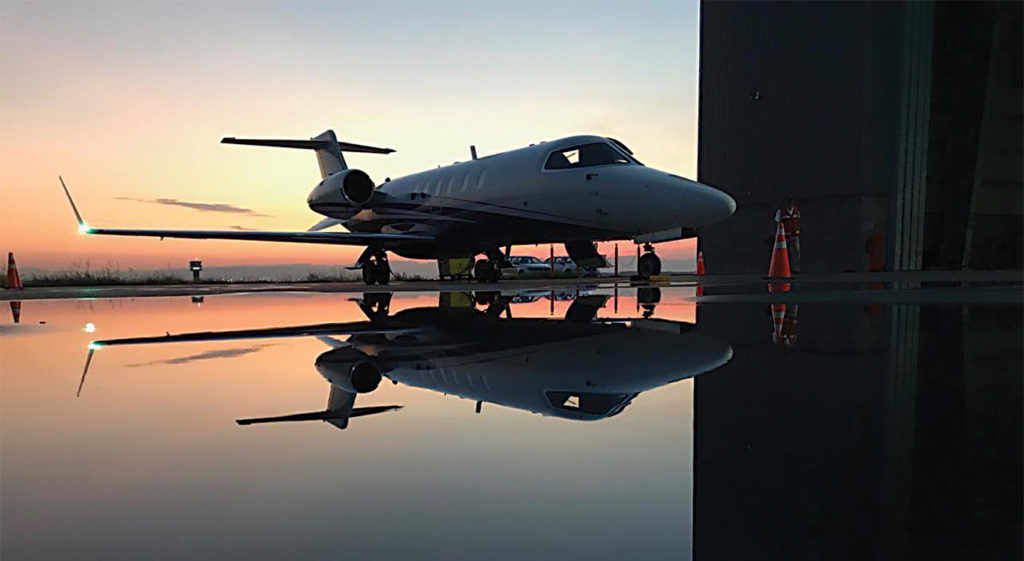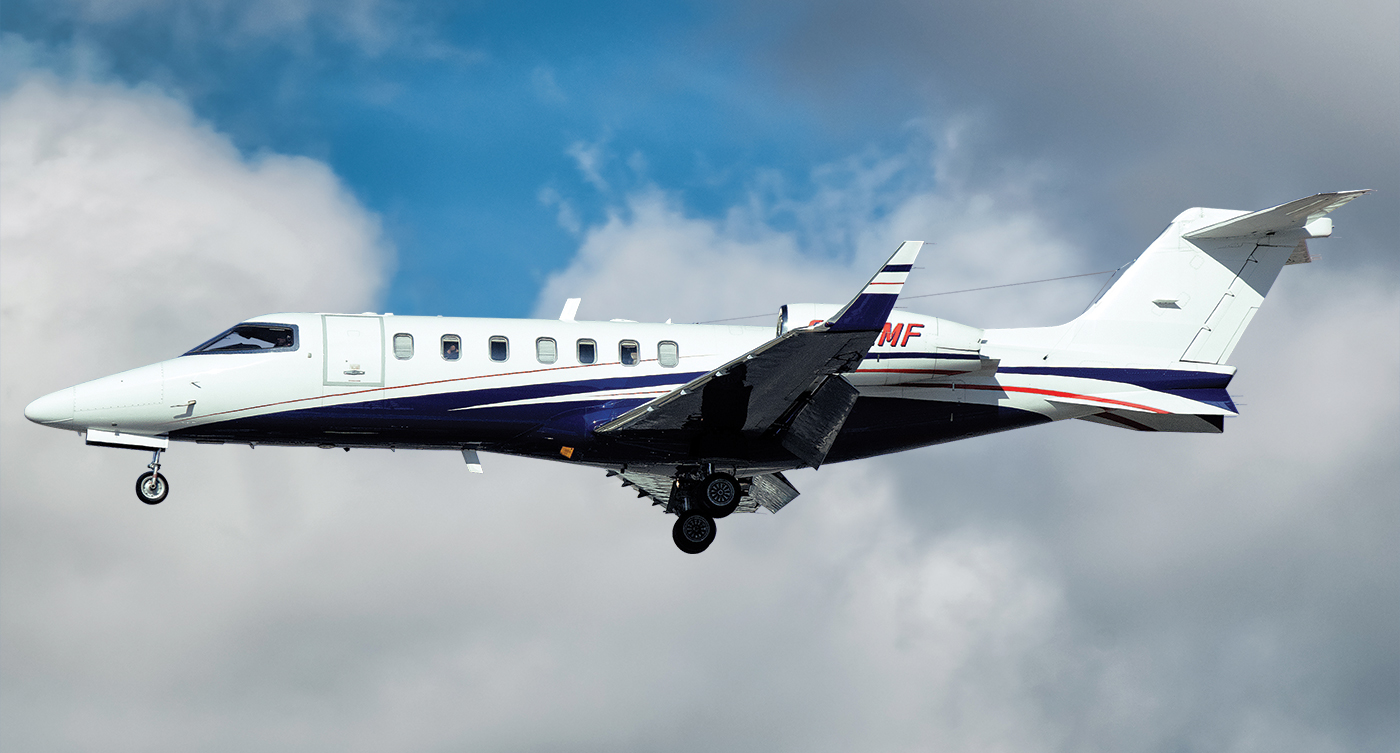Estimated reading time 14 minutes, 54 seconds.
Flying an international air ambulance is no normal gig. Not surprisingly, the nature of global air medical transportation can provide for an unpredictable work experience. Destinations can be remote and the passengers are either banged-up or sick – but rarely ungrateful. This is the world in which Toronto-based Fox Flight Air Ambulance operates.

To the company’s knowledge, it is one of roughly 22 outfits that operates an air medical transportation business on an international level – meaning Fox’s pilots are among an exclusive club of aviators performing unique missions worldwide.
The operator’s compliance with International Civil Aviation Organization (ICAO) regulations allows it to fly to places like Cusco, Peru; Funchal, Portugal (where the runway is built on a bridge); Keflavik, Iceland; and Punta Arenas, Chile.
And for international air ambulances, remote destinations can mean extraordinary missions.
Take the widely publicized case of Kristen Yaldor, a woman who was attacked by a hippopotamus in Zimbabwe on her 37th birthday in 2018. After she was taken to South Africa for care, Fox Flight was contracted by her insurance company through a broker to fly her home to Florida, in tandem with a similar South African company.
“Her leg was a mess,” recalled David Fox, Fox Flight’s founder and president. The hippo had bit through Yaldor’s leg, mangling it. Though most of Fox Flight’s nurses work in major trauma centres throughout the Greater Toronto Area, this was something they’d never seen before. “I just remember the nurse and crew picking up the flight package that day and the main diagnosis was, literally, hippo bite.”
“None of them were used to that,” added Aaron Payne, vice-president and 14-year veteran with Fox Flight. “They saw that and were like, ‘Sorry, what?!’ ”
The challenging destinations and intense missions call for pilots who can think quickly on their feet. That’s one reason, Fox said, that pilots with northern-ops experience tend to do well with the company.
“We found a lot of the people who come off King Airs that are flying in the northern communities can do quite well,” said Fox. “They tend to be able to handle the cold and problem solve . . . There’s nothing repeated, it’s always different.”
The chance to see something new on every trip, along with a well-balanced 14-days-on, seven-off schedule, factor into why the global pilot shortage hasn’t had much of an effect on Fox Flight’s operations. According to Fox, the company hasn’t had a problem recruiting new pilots to its operation – though Katrina Rankine, Fox Flight’s chief pilot and director of operations, said the company’s minimum threshold for pilot hours has dropped incrementally.
“We try to find first officers at around 1,500 hours, captains at around 2,500,” she specified. “But a lot of the people that we do hire come recommended from other people in the industry or from people that are working here.”

Fox’s fleet flies 2,400 hours a year — with pilots flying roughly 800 hours each in that same time — and the hours put in by the nurses and physicians in the back of the plane are as mission critical as the work done in the cockpit. Fox himself knows this as well as anyone. Before starting the company in 1996, he flew as a nurse escort on commercial flights – working in the trenches and earning first-hand knowledge that’s allowed his company to flourish over two decades of operations.
Over the past two years, Fox Flight’s growth has allowed the company to overhaul its fleet, upgrading from Learjet 35A and 36A aircraft to newer Bombardier Learjet 40XRs. This model is an upgraded version of the Learjet 40, with a Honeywell TFE731-20BR engine configuration that boosts maximum takeoff weight to 21,000 pounds, delivers faster cruise speeds, and provides better hot-and-high performance. The aircraft boasts a maximum range in the neighbourhood of 1,800 nautical miles. To Fox Flight’s knowledge, it is the only company in the world using the 40XR as a medevac aircraft – something it learned after trying to source stretchers for the model’s medevac conversion.
“I’d phoned around to everyone and nobody had ever installed any stretcher in a Lear 40[XR],” Fox said. “We’re the first ones.”
Being the first company to use this aircraft in an air medical configuration presented some challenges for Fox Flight, especially in the way of the stretcher system.
In the years before switching to the 40XRs, Fox Flight had adopted a dual-tank oxygen system for the company’s operations, because “it gives us long-haul oxygen.” Due to the additional size of the dual-tank system, Fox said it took the company six months to find someone who could configure a stretcher system that would work in the Lear 40XR.
“Lear had pictures of them with a [stretcher] installation in a Lear 40,” Fox remarked. “Turns out they had stuck one in there, took pictures and pulled it back out.”
Fox’s director of maintenance, Nick Fraser, had work to do. Fraser and his team of four got busy and configured a system that would allow Fox Flight to put a stretcher on a ramp at the door of the aircraft and slide it up to the bed. To make space for that manoeuvre in the 40XR’s cabin, the existing cabinetry needed to be stripped and resized.
All of this re-configuration led to another hurdle: certification. The stretcher system Fox Flight installed had originally been certified for use in the Lear 45 but, according to Fox, the 40XR’s fuselage is two feet shorter.

“You go to the company who has the structure and say, ‘Oh, we’re putting it into a Lear 40XR,’ ” recalled Fox. “[They say] ‘well, that’s different than a 45.’ . . . It’s not, but it created some challenges for us.”
Fox’s team of in-house specialists made it work and since October 2019, Fox’s fleet of three Lear 40XRs have been flying medical missions around the globe.
Like the company’s maintenance and aircraft conversions, everything is done in-house. Pilots, medical staff, maintenance, dispatch and accounting are all provided through Fox Flight. This formula has allowed the company to supplement what it needs, when it needs it. Is a particular piece of medical equipment necessary for a specific mission? Fox Flight will go out and purchase it. Fox’s sole ownership of the company since its founding has allowed it to flourish without overcomplicating operations.
The entire staff of 65 wears the same Fox Flight uniform, including Fox, to highlight the team’s equality. To keep things simple in the accounting department, the company charges a flat aircraft mileage rate that includes all services, rather than varying rates from mission to mission.
For Fox, the genesis of the company’s success boils down to one thing.
“We do great care,” he replied. “We’re a medical company that has airplanes . . . At the end of the day, it’s about the patient and we do a good job looking after the patient.”
The Fox family
Before founding Fox Flight with his wife and fellow nurse, Rowena, Fox was working in the intensive care unit at Women’s College Hospital in downtown Toronto. In his spare time, he moonlighted as a nurse escort on commercial flights. The air medical transport business was still in its infancy at the time, and economics often allowed for people who got sick or injured on vacation to affordably stay where they were. According to Fox, it was more expensive to bring them back to Canada than it was for them to receive medical care in their current location.
“But then that all changed,” he explained. “Now, the cost of leaving somebody in these places is quite exorbitant compared to bringing them home.”

After some time, he switched his focus from a career in the hospital to a career in the air, opening shop at what was then called Toronto Island Airport (now Billy Bishop Toronto City) in 1996.
In the first six months of operation, Fox Flight welcomed six additional flight nurses. In the next year and a half, the company had its own medical staff escorting patients on commercial flights in North America, and began leasing another company’s aircraft for missions to Europe.
It was only a matter of time before the company needed its own wings. In 1998, Fox sat down with his chief financial officer and formed a plan to purchase a Citation 500 with an Eagle wing modification, and converted the plane for medical transfers.
At that time, the modifications were outsourced – Fox Flight didn’t begin in-house maintenance and conversion work until 2010 – and included things like customized cabinets and the addition of electrical sockets for medical equipment. On average, said Fox, an air medical conversion takes roughly two months to complete.
In the same year, due to the need for 24-hour operations and fewer weather restrictions, Fox Flight moved from the island airport to Toronto Pearson International.
In 2005, after growing operations across North America and into the Caribbean, Fox traded the Citation 500 Eagle for a Learjet 36A, boosting mission range from 1,214 nm (2,249 km) on the Citation to 2,857 nm (5,291 km) on the Lear. The next year, Fox Flight added a Learjet 35A. By 2014, the company’s fleet had expanded to four with a pair of additional 35s.
Only four years later, the decision was made to upgrade to the Learjet 40XR.
“A lot of it came from looking at what was newer, what would be more effective – and from [the perspective of] our clients, the patients and the families,” Fox explained. “Really, a lot of it came from a ‘back of the airplane’ decision.”

The 40XRs
If passenger comfort was the driving force behind modernizing its fleet, Fox Flight made a smart choice. The 40XR offers an additional five feet in cabin length compared to the 35s, while also offering a feature missing from the smaller jet – a lavatory.
“We take companions on our flights,” said Fox. “If we’re taking somebody [who’s 70] off a cruise ship out of Rome, Italy, the chances are the companion is a 70-year-old spouse. To go from Rome to Keflavik [in Iceland] and across, they at least want access to a washroom. They want some room to put baggage and things.”
At the front of the plane, the 40XR sacrifices just under 200 nm (370.4 kilometers) in range compared to the 35s, but its lighter frame gives it roughly 6,000 additional feet of service ceiling.
The 40XR’s increase in hot-and-high performance compared to the 35s has allowed Fox Flight to land at previously unattainable locations such as El Alto International Airport in La Paz, Bolivia, the highest international airport in
the world.
“With the 35s . . . [it’s tough to] land above 8,000 feet,” Fox remarked. El Alto International sits at 13,325 feet. “We could do it [easily and safely] in the 40XRs.”
“It was just funny setting it up,” Payne chimed in. “I remember we were speaking with the handlers [in La Paz] and they’re like, ‘Lears don’t come here.’ ”
Fox continued, “It’s opened up different destinations, but it’s also sped things up dramatically for us . . . We can fuel and turn the airplane around in 20 to 30 minutes. Before, each wing needed to be refuelled.”
The 40XR has single point refuelling, which allows operators to fuel the entire aircraft from one point, where a series of pressurized valves carries the fuel throughout the aircraft. This is a dramatic difference from the 35s, in which fuel tanks on both wings needed to be topped up individually.
The upgrade has allowed Fox Flight to comfortably schedule tech stops at half the time that used to be required for the 35s. Back in the maintenance department, Fraser said the switch to the newer aircraft has led to a lighter maintenance schedule with 3,500 hours between overhauls. By minimizing maintenance costs, Fox Flight’s overall operational expenditures have also decreased.

“Thirty years make a huge difference,” he said, referencing the age gap between the old 35s and the 2008 and 2009-built 40XRs. “There’s a lot more tools in terms of troubleshooting if there’s an issue.”
If the upgrade to the 40XR has improved life for cabin crew and the maintenance staff, how has it affected Fox Flight’s pilots?
“It’s basically the same,” said Rankine. “Though it is newer equipment than what the 30s had from the pilot’s perspective.”
“We went from gauges . . . to touch screens,” added Fox, referencing the planes’ Honeywell Primus 1000 avionics suite.
Something Fox Flight stressed was that the transition to the new aircraft should be as seamless as possible. To get its 11 pilots up to speed, the company sent its chief pilot, Rankine, to FlightSafety in Tucson, Ariz., to be trained and certified on the Lear 40XR. She then did the initial training with Fox Flight’s other pilots in Toronto, who subsequently went to Tucson two at a time to complete the training and get their rating while the others continued to pilot the older aircraft.
“Got poutine?”
Still, newer jets and increased global operations haven’t jaded Fox Flight. Through its 24-year operational history, the company has kept its clients at the front and centre of its operations. Fox stressed that almost all of the carrier’s operational decisions have been based on client comfort.

Keeping things simple has been a mantra for the Fox team.
Payne described the operation as a “small, intimate company that does big things.
“I’d say that’s our biggest seller,” he added. “Speaking with a lot of people, I think a lot of [them] are just impressed [by] how simple we are. It’s not over the top.”
That simplicity has allowed David Fox to cultivate and retain a family feeling at his company. On most days, he comes into the office with a box of fresh pastries from Etobicoke’s SanRemo Bakery, and is always close to his phone in case a deployed crew member needs to reach him.
Recall the hippo bite mission, for example.
After Yaldor was flown to Tenerife in the Canary Islands by the South African air ambulance company, the Fox Flight crew met them there and took her up to the Azores and across to St. John’s, N.L.
After the long flight and intense mission, the crew, along with Yaldor and her Canadian husband, would be making one more stop at Toronto Pearson before heading to Florida.
“So, I get a phone call and they were making their tech stop in St. John’s,” said Fox. “One of the members of the flight crew was on the other line. He asked, ‘Can we get poutine for the flight?’ ”
Sure enough, Fox headed out to nearby Zet’s Restaurant, picked up poutine – and Tim Hortons coffee on the way back – and waited at Pearson to deliver it to the hungry passengers himself. It was just one more example of Fox Flight’s commitment to putting patients and passengers first.


All the staff on board were so accommodating, ensuring my husband and I were comfortable throughout the flight. Medical staff kept an eye on me to make sure I was stable throughout as well. Each stop along the way added to the unique experience as we traveled from the scorching hot climate to ice cold north before making our way south home to Florida. The staff made sure I was bundled up during the colder stops and kept me cool in the warmer spots.
What started out as a joke – “Since we are flying through Toronto – can we order some poutine?” – turned into surprise reality! As Fox brought us a take away delivery to the plane while we were at their hanger refueling. There is nothing like fresh made hand delivered poutine to satisfy that craving!
They do an amazing job saving lives and reuniting families. The care package they gave us was one to remember as well. Thank you Fox Flights for bringing me home! I will be forever grateful!
David,
Please give me a call.
705-937-1260-
Dan